Selling your products or services online can bring about countless new growth opportunities for your business. It is important to have a strong and easy-to-use e-commerce website in order to succeed, however. In this blog, we’ll cover how to build an ecommerce website from scratch to set you up for success. If you have any questions along the way, feel free to reach out to us!
At Compete Now, we’re dedicated to helping clients build their businesses through effective, engaging websites. We’ve designed and marketed over 200 websites for a range of businesses. Contact us if you’re interested in building or redesigning your e-commerce website! Below are the steps we’d go through with you when building your website.
Preparing to Build Your Site
Know Your Target Market
One of the things to consider when building an ecommerce website is knowing who you’re trying to target your products and website to. If you don’t know who your customer is, then it’s difficult to shape your products and website into something that engages them.
Follow these questions to help create your customer persona:
- What do your customers look like?
- What are your customers’ problems?
- What do your customers value?
Creating your customer persona is one important way to identify your target market. We also recommend doing some keyword research to garner an idea of what people are Googling in relation to your products. By doing this, you’ll understand how to word your products on your site, while also discovering which of your products are more likely to sell.
Inventory
When building an ecommerce website from scratch, you should consider your inventory before starting. Know your storage location, inventory management, and inventory levels so you can manage online sales without consistently selling out and upsetting customers.
Pricing
It’s important to know how you plan on pricing your products as well. When you decide to sell online, you’re competing with companies like Amazon that offer low prices and quick, free shipping. Research the prices of similar products before you spend money adding them to your website.
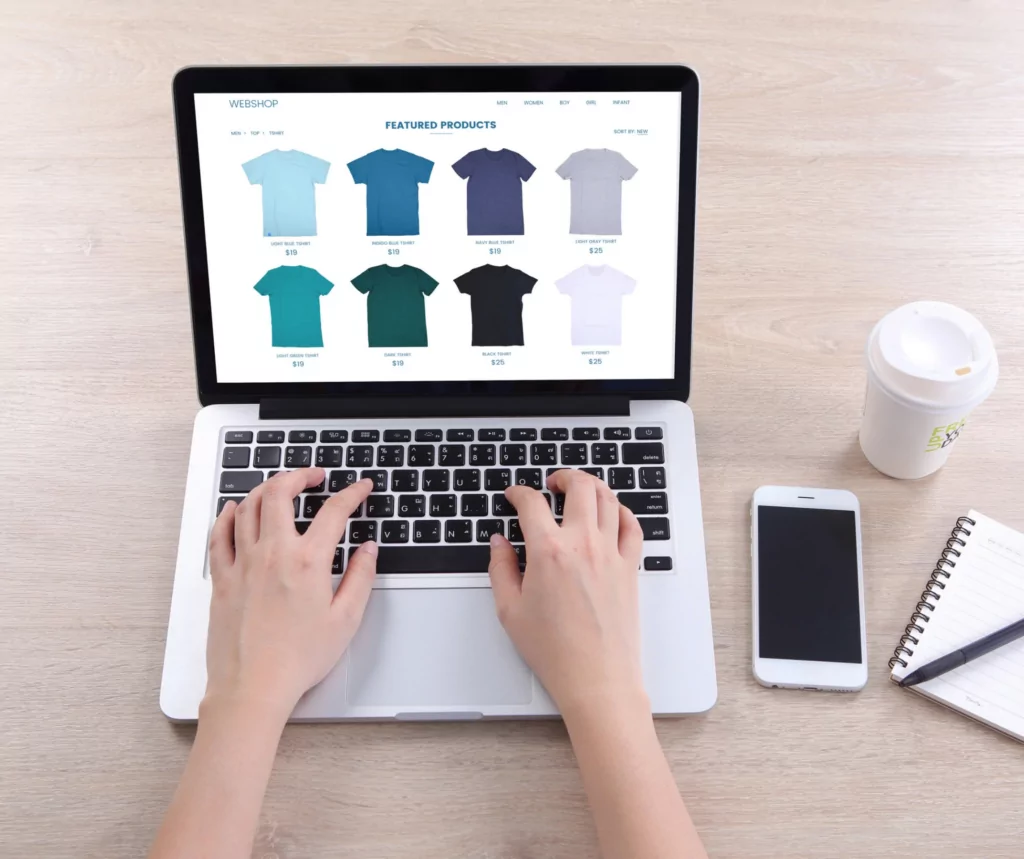
Shipping Services & Pricing
The shipping services and prices will determine the last step of your customers’ check-out process. Your shipping services include FedEx, UPS, and USPS. If you’re shipping perishables, we recommend using FedEx because they offer PeriShip, a shipping service dedicated to shipping perishables. Once you choose your shipping service, you’ll pick your shipping price. This includes free shipping, a flat rate, or real-time which calculates the shipping cost based on the weight of the items.
Terms & Conditions
Something to consider when building an ecommerce website is your website’s terms and conditions. With an e-commerce website, you’ll need to create two terms and conditions pages before you’re allowed to sell any products on your website. These pages include:
Privacy Policy
A Privacy Policy page is required by law. This page should go over cookie policies and the type of data you’re collecting from users. It’s recommended that you hire a lawyer to write this policy. However, if a lawyer isn’t attainable, there are free templates available for use online.
Return Policy
Your Return Policy is a source for customers who want to make a return or want to know if returns are available before buying from your site. This page should include information on if you offer returns, the return deadline, conditions, and how to make a return.
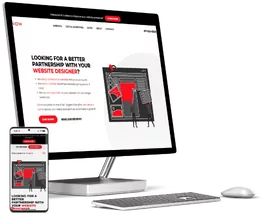
Looking to Redesign Your Website? Contact Us for a Quote
Get Started
Steps to Setting Up Your Site
Once you have the basics prepared, then you’re ready to set up your website. However, if you don’t have a pre-existing website, you’ll need a few components to get started.
If You Don’t Have a Website
To create your website, you’ll need a domain name (we recommend using GoDaddy), an SSL certificate, and a hosting package that supports e-commerce. After your website is created, you can choose your recommended e-commerce platform.
Recommended E-Commerce Platforms
There are numerous e-commerce platforms to choose from, however, our team commonly uses WooCommerce (also known as Woo) and Shopify. These platforms are both customizable and easy to use for customers. Let’s go over their differences:
WooCommerce (known known as Woo)
WooCommerce is a popular choice because it’s a WordPress plug-in, making it easy to add to your site. Its pros and cons include:
- Pros:
- Many free theme options
- Adaptable, meaning you can sell many product types
- Good security
- Large community to help with any questions about the platform
- Cons:
- Plugin doesn’t include SSL certification
- Additional add-ons to the plugin take up memory
- Many of the desired plugins aren’t free
- Difficult to customize without the help of a web designer
When we built the website for Woodman’s of Essex, they wanted an e-commerce component to sell apparel and gifts. WooCommerce was the ideal option for them because they had a WordPress website. They also weren’t looking to focus their entire website on online sales, so WooCommerce made sense. Learn how to add the WooCommerce plug-in to your WordPress website on our blog!
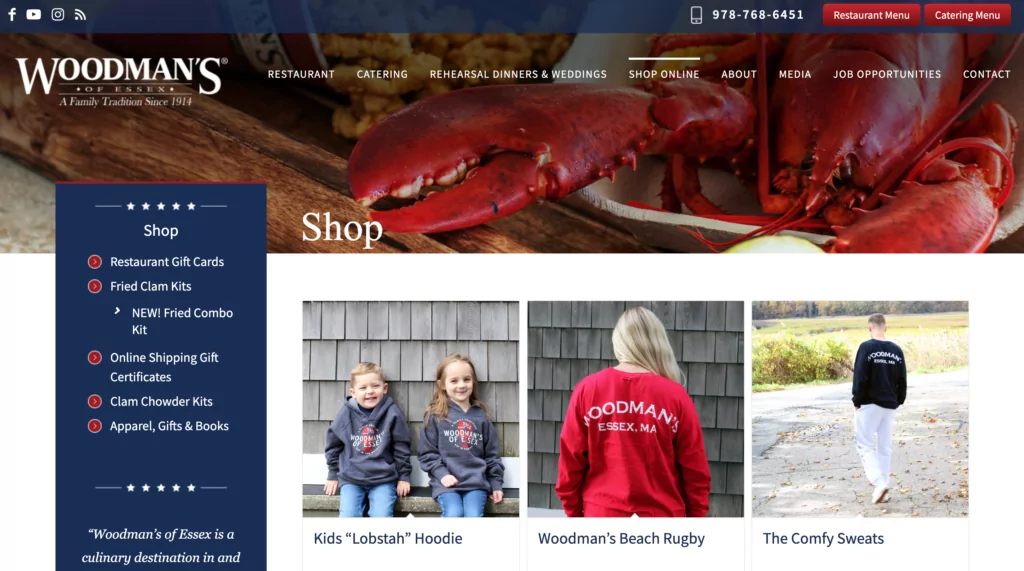
Shopify
Shopify is an ideal option if you’re planning on dedicating your entire website to e-commerce, especially when selling physical products. Some of the pros and cons of Shopify include:
- Pros:
- Scalable with site growth
- Free SSL certificate
- An easy, built-in payment system
- Good themes
- Manages multiple sales platforms
- Easy to import/export data
- Convenient customer service
- Cons:
- Less free templates
- Image resizing is manual
- Only 3 free variations for each product
- More expensive than WooCommerce
When we built E.W. Hobbs’ website, we incorporated Shopify because of the business’s focus on online orders. This allowed us to create more product variations while also providing them with space to grow as they added products.
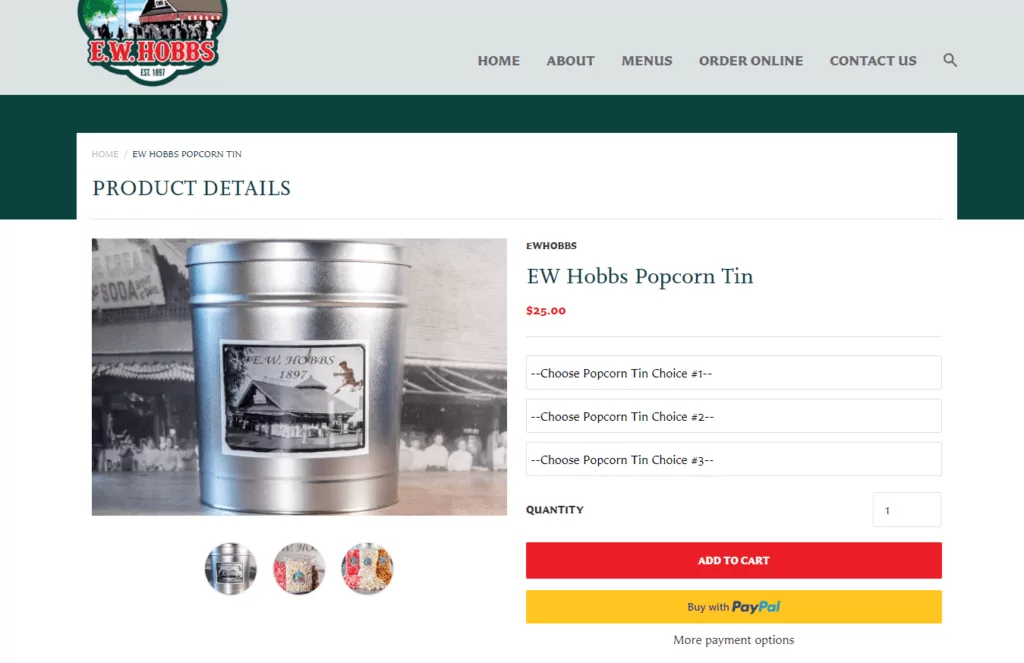
Getting Started with Your Chosen Platform
After you’ve chosen your e-commerce platform, you can begin the steps to building your e-commerce pages.
1. Choose a Theme
Whether you choose Shopify or WooCommerce, you’ll need to choose your website’s theme. Shopify is known for offering modern, free designs. Although there aren’t as many free options on WordPress with WooCommerce, there are great paid themes available.
2. Make a Product Page
Your product page(s) will be the space on your website where your products exist. We recommend using clear product names, strong descriptions, and most importantly, high-quality photographs of your products.
3. Other Important Pages
There are some pages of a website that our team of web designers recommends. This list includes a homepage, an About Us page, and a contact page. Your home page should feature your most popular products that customers can’t get anywhere else, and calls to action that direct them to your product page. The About Us page should highlight your story and why your business exists. Don’t forget about your contact page so that customers can easily find an email or phone number to reach out to you.
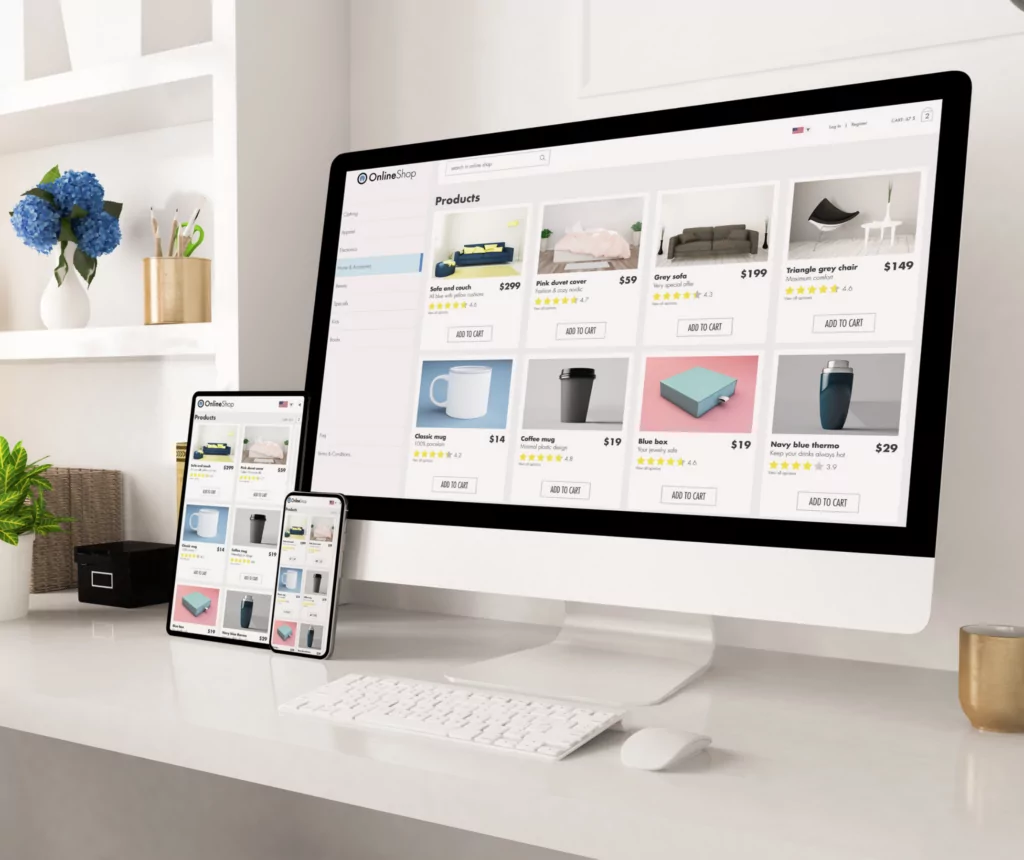
Generating Sales
Something people don’t think about when building a website is making sure it receives the attention it deserves. When you publish your new website, sales and pageviews can take time to build up. However, we have a few tips to help you bring attention to your site below to generate those sales.
SEO Strategy
Every website needs an SEO strategy in order for it to rank well on Google and outrank competitors. This can include doing keyword research, adding meta descriptions, and blogging. By having a strategy, you’re promoting your business’s name online in an organic, free way. If you’re unsure of where to start with your SEO, browse our SEO services!
Word of Mouth
The benefit of having a website is that it’s super convenient to share with anyone! Send your website’s URL to family, friends and past clients so that they can spread the word further. Learning how to use your website to reinforce word-of-mouth referrals is the perfect way to generate leads.

Email Marketing
If you have an email marketing list of current customers, don’t forget to let them know about your new website! Send out a quick email to your existing audience sharing information about the new platform. Encourage them to forward the email to others interested in your products. Check out our email marketing services for help!
Facebook Groups
If your town or city has local Facebook groups, try promoting your business there! Some of these groups have rules on promotional posts though, so make sure to read those over before posting.
Facebook Ads
We offer social media marketing services because social media advertising, using platforms such as Facebook Ads, is a seamless way to reach thousands of people in and outside your local area. If you have the budget for paid marketing, we recommend putting it towards some advertising to target your ideal customers.

Contact Compete Now for an Engaging E-Commerce Website
Learning how to build an ecommerce website from scratch can be overwhelming. From choosing your preferred e-commerce platform to creating web pages, there’s a lot involved in building an e-commerce website. At Compete Now, our team of web designers and marketers can take care of it all for you. We’ll create a website that fits your goals and needs, keeping you updated throughout the process so you know you’ll be happy with the result. Schedule a call with us today to get started!

